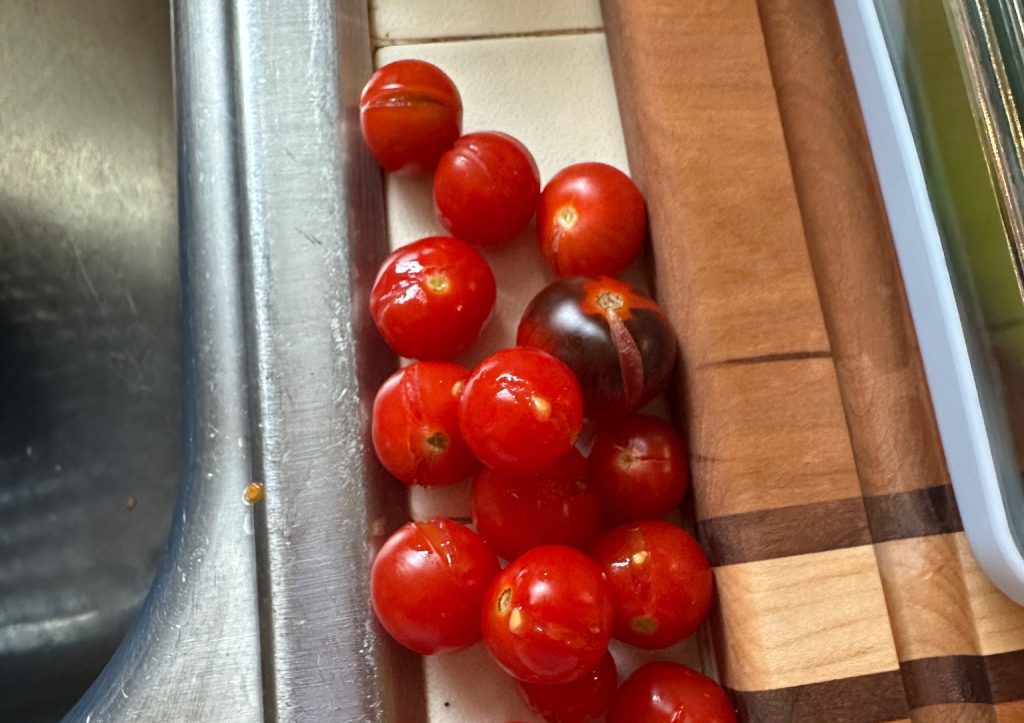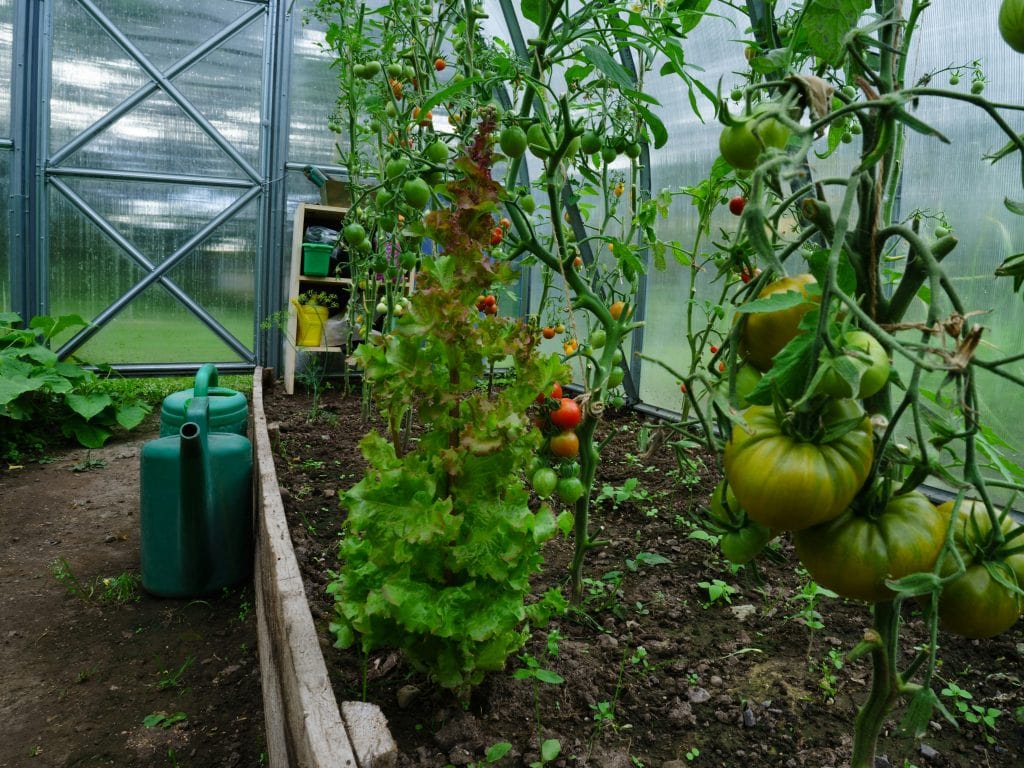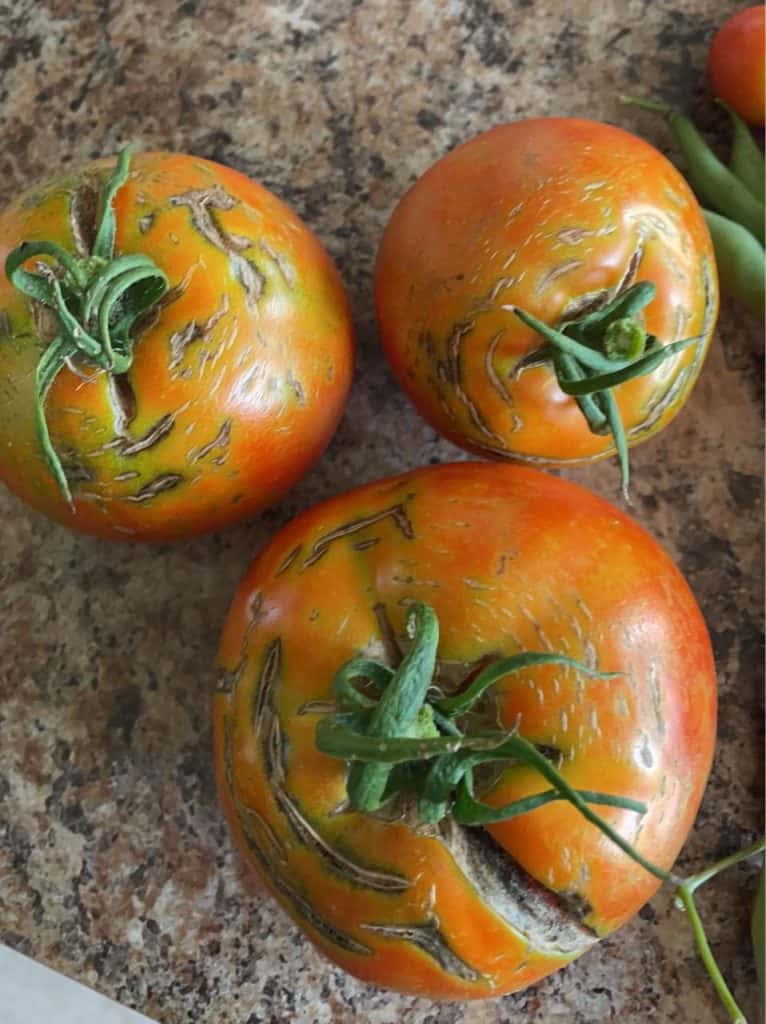Tomatoes cracking open right before they’re ripe is one of the most frustrating things in the garden. You wait all season, take care of them, and just when they look good – split.
It happens more often than gardeners realize, and usually it’s not because of anything you did wrong.
The good news is, there are simple ways to fix it. Once you understand why it happens and what your plants are telling you, it’s pretty easy to keep it under control.
In this article, I will walk you through the practical stuff – watering, soil, picking the right varieties, and more – so you can get more good tomatoes and waste less.
Why Tomatoes Split?

Before fixing the problem, it helps to know what's actually going on. Tomato splitting mostly comes down to how the fruit takes in water.
When a tomato plant goes through a dry spell and then suddenly gets a lot of water (whether from rain or watering) the fruit swells too fast for the skin to keep up, and it cracks. Kind of like when you overfill a balloon.
There are two kinds of splits to look out for:
- Radial cracks go from the stem down the sides. These are the big ones that open up fast.
- Concentric cracks are the little rings around the stem. They don’t always ruin the fruit, but they still aren’t ideal.
You’ll see splitting happen most often after a hot, dry period followed by a rainstorm. The plant soaks up water like a sponge, and the tomatoes can’t handle the sudden change.
That’s why the timing of the weather, and how steady you keep things, matters so much. The key is keeping everything as even as you can – especially the water.
Water Management Techniques to Prevent Splitting
If your watering is all over the place, that’s usually the main reason tomatoes start splitting. The plant doesn't like surprises – especially when it comes to water.
So the goal here is to keep the soil moisture steady, not bone dry one day and soaked the next.
Consistent Watering
Tomatoes do best when they get about an inch of water per week, and it’s better to spread that out over a few days.
During hot summer weather, watering every two to three days usually works well. What you want to avoid is letting the soil dry out completely, then dumping a bunch of water on it.
That’s what causes the fruit to swell too fast and split.
How to Water the Right Way
Instead of spraying water all over the plant, water right at the base.
You can use a drip hose or a watering wand for that. This gets the water where it needs to go (down in the roots) without getting the leaves wet, which also helps prevent diseases.
The “Finger Test” for Soil Moisture
You don’t need any fancy gadgets to check if your plants need water.
Just stick your finger about an inch into the soil. If it still feels moist, wait another day. If it’s dry, go ahead and water. That’s really all there is to it.
Improve Soil and Planting Environment

Keeping your soil in good shape can go a long way in stopping your tomatoes from splitting.
It’s not just about watering – how your soil holds that water matters too. The goal is to hold onto just enough moisture without drowning the roots or drying them out.
Use Organic Mulch to Regulate Moisture
Mulch is one of the easiest ways to keep the soil from drying out too fast or getting too soaked. A good 2- to 3-inch layer around the base of your tomato plants can do a lot of the heavy lifting.
You can use straw, pine needles, grass clippings, or even well-aged compost.
Mulch slows down evaporation and keeps the moisture more even, which helps prevent those big swings that cause splitting.
At the end of the season, you can mix the mulch into the soil or just leave it to break down naturally.
Boost Soil with Compost
If your soil dries out too quickly or just doesn’t hold water well, mixing in some high-quality compost can help. Compost improves water retention, adds nutrients, and makes your soil more forgiving during dry spells or sudden rain.
Ensure Proper Drainage
Good drainage is just as important as water retention. If your soil stays soggy, your tomatoes are still at risk.
Raised beds or containers with drainage holes can make a big difference, especially if you’re working with heavy or compacted soil. Use loose, crumbly soil that drains well but doesn’t dry out overnight.
Choose the Right Tomato Varieties

Some tomato types just handle weather swings better than others. If splitting has been a constant problem for you, it might be time to take a closer look at what you're growing.
Best Split-Resistant Varieties
Some tomato varieties naturally handle moisture swings better than others. If splitting has been a constant problem in your garden, these types are worth trying:
| Juliet | Big Beef |
| Celebrity | Big Boy |
| Plum Regal | Jet Star |
| Pink Girl | Box Car Willie |
| Sun Gold | Mortgage Lifter |
| Grape Tomato | Pruden’s Purple |
| Roma | San Marzano |
Varieties to Avoid
Some tomatoes are just more likely to split, no matter how careful you are.
Big heirlooms like Cherokee Purple and Beefsteak often have thinner skin, which makes them more delicate. Cherry tomatoes can also split pretty easily, especially after a rain.
This doesn’t mean you can’t grow them – it just means you’ll need to be extra steady with watering and maybe pick them a bit earlier if wet weather’s coming.
Smart Harvesting Practices
Even if you’ve done everything right – steady watering, good soil, the whole bit – a heavy rain can still come through and mess things up. That’s where smart harvesting can save a lot of your crop.
Early Harvesting Before Rain
Once a tomato starts turning color, it doesn’t need to stay on the vine to ripen. If you know a storm is coming, it’s a good idea to go ahead and pick any that are starting to blush.
Lay them out on a windowsill or somewhere with decent light and they’ll ripen just fine. This way, you avoid the risk of them splitting from the sudden rush of water.
Protecting Yield from Pests and Cracks
Early harvesting also cuts down on the chance of bugs or critters getting to your tomatoes.
A cracked tomato is like an open invitation for pests and rot. Picking a little early keeps more of your crop in good shape and saves you from losing fruit right at the finish line.
Nutrient and Fertilization Tips
How you feed your tomato plants plays a bigger role in splitting than most folks think. The right balance of nutrients helps keep growth steady and fruit skins strong.
Use Balanced, Slow-Release Fertilizer
Go for a fertilizer that’s balanced and releases nutrients slowly over time. Something too strong can make the plant grow too fast, which leads to problems like cracking. You’re not trying to rush the plant – just support it.
Watch Your Nitrogen Levels
Too much nitrogen is a common issue. It pushes the plant to grow fast, especially the leaves and stems, but it also makes the fruit swell quickly.
That’s when the skin can’t keep up, and the tomatoes split. Fertilizers made specifically for tomatoes usually have lower nitrogen and more phosphorus and potassium, which is what you want.
Prevent Calcium Deficiency
A lack of calcium can also lead to cracking, along with other problems like blossom end rot. Many tomato fertilizers already have calcium in them, but it’s worth checking the label. Keeping your soil balanced and healthy helps the plant build stronger fruit that holds together better.
What to Do When Tomatoes Split

If a tomato has already split, the best thing to do is pick it right away. Leaving it on the vine just gives pests and disease more time to move in.
Small cracks aren’t always a total loss – just cut away the damaged part and use the rest right away for cooking or fresh eating.
But it’s best not to use cracked tomatoes for canning, even if they look mostly fine, since the broken skin can let in bacteria.
When splitting starts to show up, it’s also a good time to watch the weather more closely.
A stretch of dry days followed by a heavy rain can lead to more cracked fruit overnight, so harvesting a little early can help prevent losing more.
Put These Habits in Place to Keep Your Tomatoes from Splitting
Tomato splitting is frustrating, but it’s usually something you can fix with a few steady habits.
Keep the watering consistent, improve your soil with compost and mulch, and pick varieties that can handle a little stress.
Pay attention to your fertilizer (especially nitrogen and calcium) and don’t wait too long to harvest if rain’s on the way. Stick with these simple practices, and you’ll end up with more good tomatoes and a whole lot less waste.
Ready To Transform Your Garden?
Are you looking for the best way to layout your garden beds? Maybe you're feeling a bit stuck on how to make the most of your space?
We’ve got you covered! Check out our 101+ Garden Bed Layout Ideas for your next raised bed project. This guide is filled with creative and practical ideas that can help you design a garden that fits your style, whether you’re just starting out or have been gardening for years.
Get your copy today and get inspired to bring your gardening dreams to life.


This was really helpful
I have seen these splitting alot on my garden and always wondered what might have been the cause. I will definitely try these techniques out
For the varieties, F1 Cobra 26 has the best resistance to splitting I have been using it for years now it’s really good. You could try that out too.
Thanks for the write up